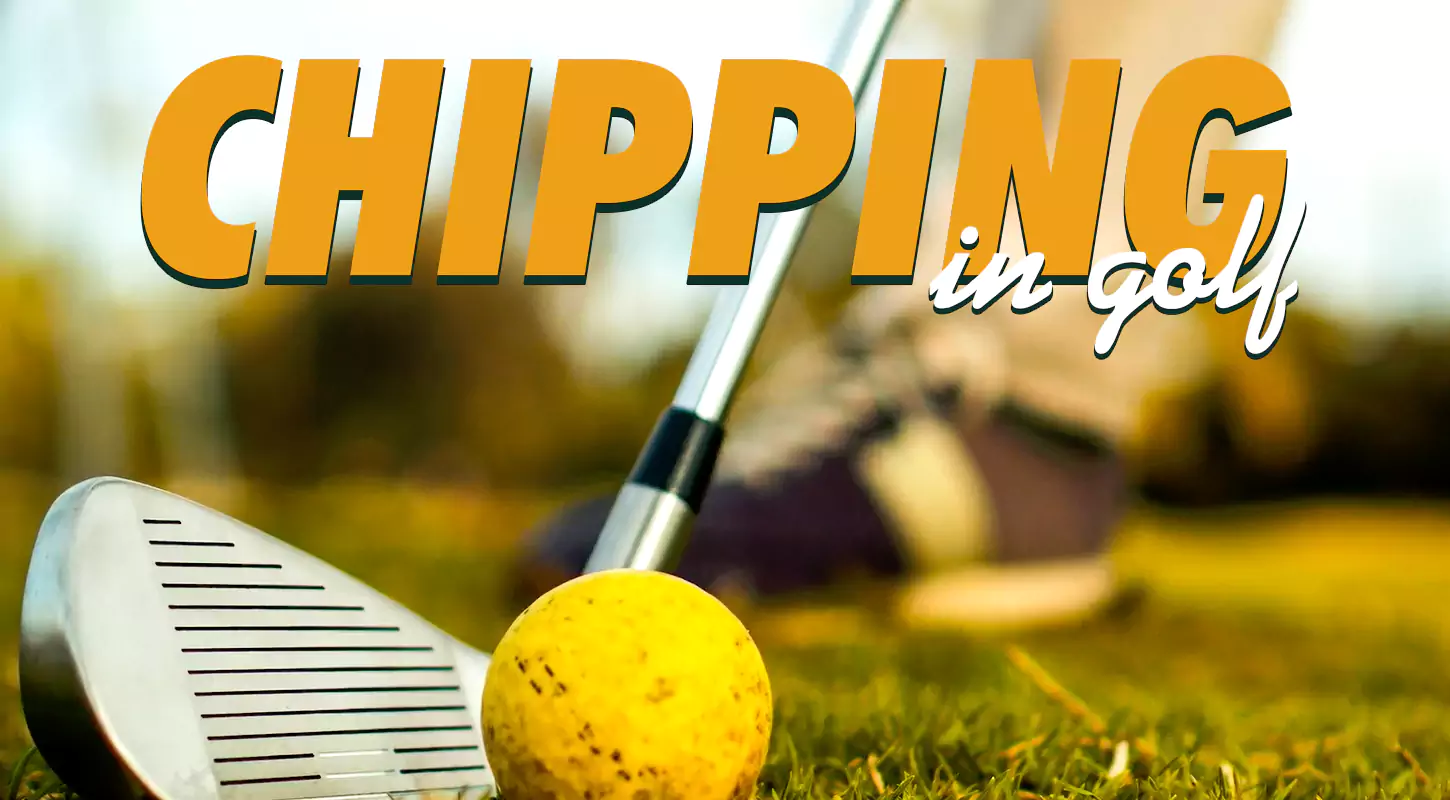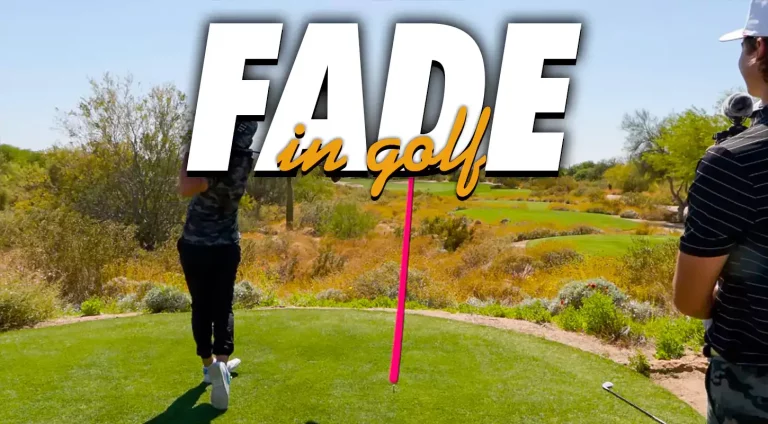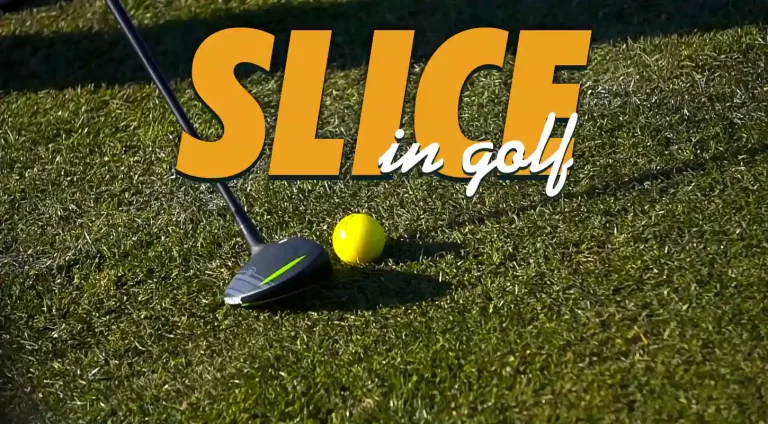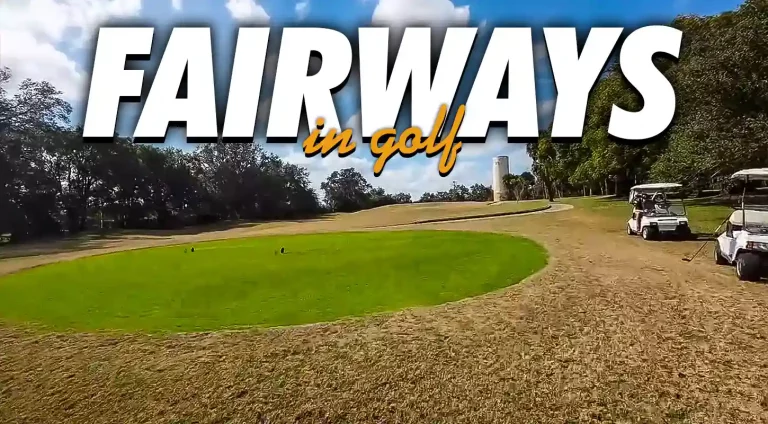Chipping in golf
Learning how to chip a ball is one of the most valuable golf skills, but it is often looked upon by amateurs. Basically, chipping in golf can help you lower your score and boost your confidence. Therefore, chipping in golf can improve your game to a greater extent and make your buddies jealous as you consistently beat them.
But first, you need to understand what a chip shot is.
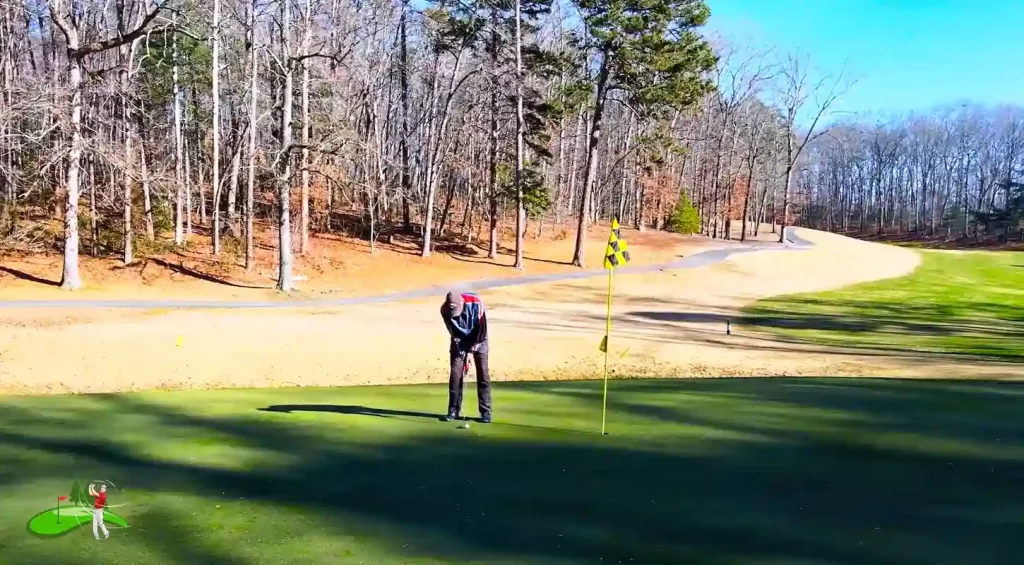
What is Chipping in Golf?
A chip shot is a short game stroke, where the ball travels a little distance in the air, then rolls on the green with more control and consistency than a normal shot.
During this shot, your arms ride along with your chest while also making a small turn back and through. This gives you more control over your shot, so you strike a short putt.
Now that you understand what chipping in golf is, let’s talk about the best ways to achieve a better chip shot!
Chipping in golf tips
Proper posture
Many golfers tend to follow a squattier posture during their game, and it leads to inconsistent contact with your club and ultimately the ball. So, following a good posture can help you hit some good shots. You can simply bend a little forward from the hips and allow your arms to hang directly under your shoulders.
Once you have a good posture, you are ready to adjust your stance according to the shot you are playing.
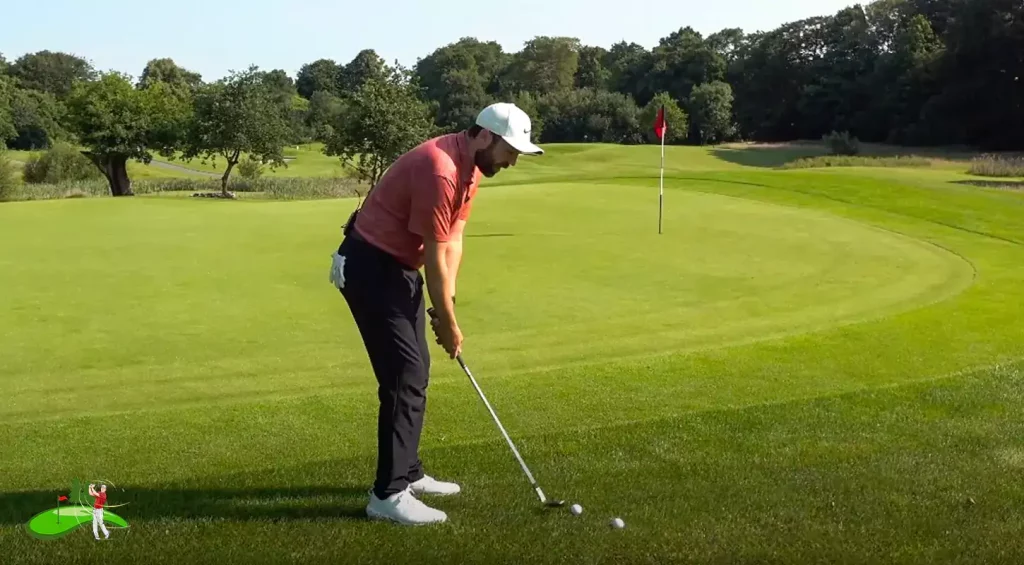
Use a proper stance and setup
Putting and chipping both require smaller strokes. So, in order to get the desired chipping shot, you should make small adjustments to your stance. This will ultimately put you in a position to guarantee a cleaner contact.
Develop your chipping stroke
A good chipping stroke requires your arms to stay intact forming a triangle, as your body moves. The size of the stroke varies from person to person, but make sure not to make huge chipping strokes as it can damage the quality of your contact.
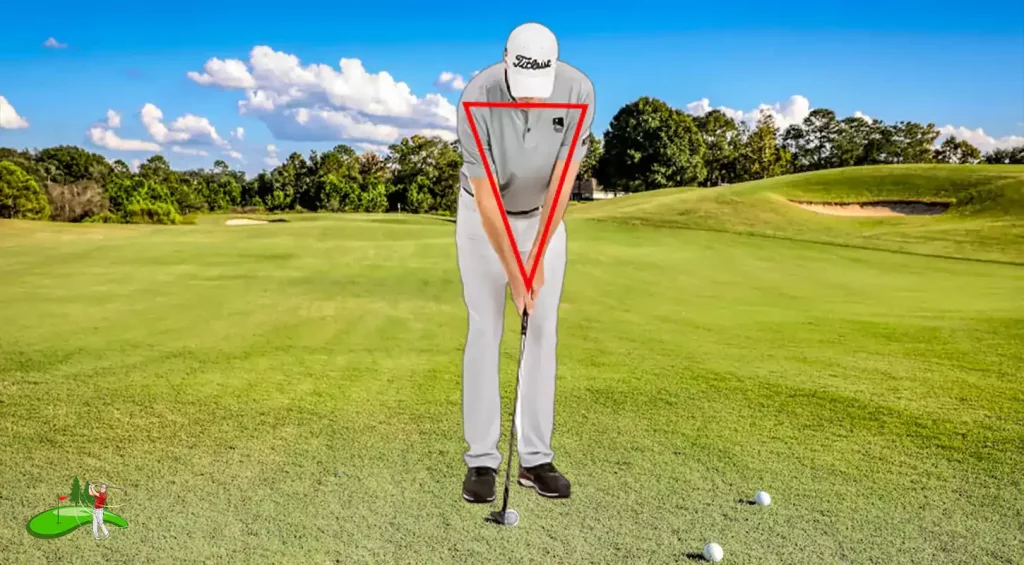
Understand ball-turf interaction
Chip shots should stay in the air for some time and to do that, always keep this golden rule in your mind:
“Hit the ball down to make it go up”
If you understand this rule, it will help you make a proper stroke with a descending blow.
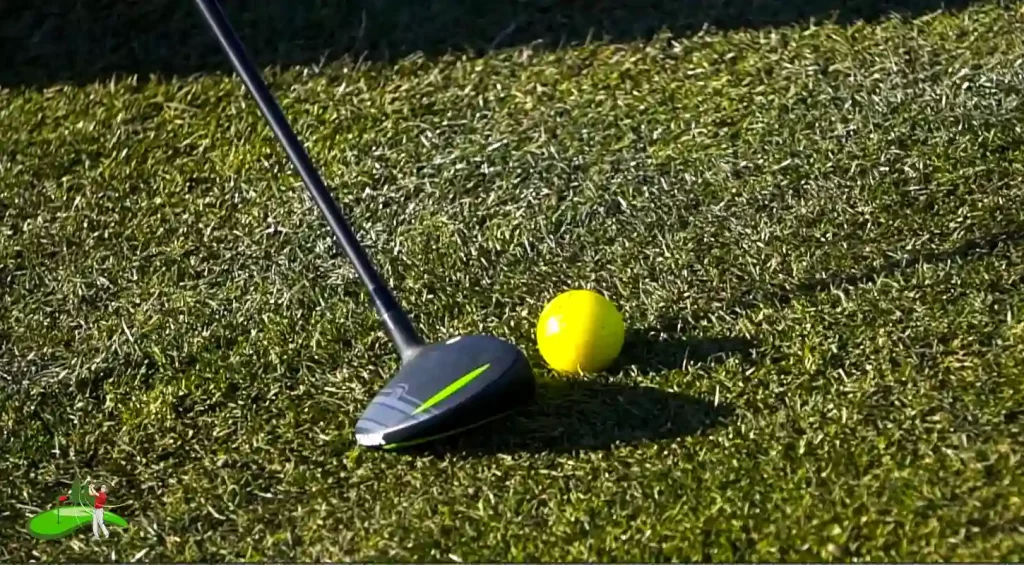
Grip for chipping in golf
While you are improving your chipping style, make sure that you don’t copy others. Some golfers use a heavy wrist motion, while others prefer the opposite. So, you should determine what suits you best and work on that.
In addition, do not let any kind of pressure or tension overtake you as it can prevent you from feeling your clubhead, ruining the shot. Keep your grip soft and relaxed enough so that the club can fall gently into the ground during impact.
Measure and calibrate your distance
Now that you are all set with your fundamentals, it’s time to calibrate your distance control. While there are many ways to do so, one common practice is to learn one basic stroke size according to your personal preference and then simply change the club. This will help you calibrate the distance by changing the flight-to-roll ratio.
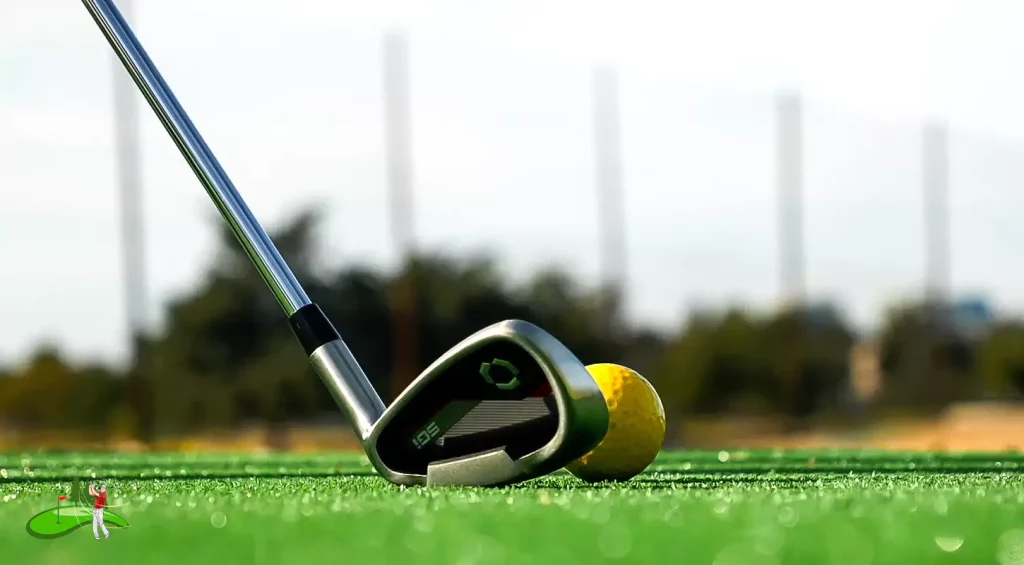
Use an alignment rod
Another great option to improve your chipping technique is to use an alignment rod and practice with it. Along with this, if you follow up with all the things stated above it will certainly help you become a pro at this game.
Adjust the position of your ball
Usually, when chipping, golfers have a narrow stance and position their ball slightly back. So, simply by adjusting your ball, you can change the height of your shots.
For example, if you place your ball in a more centered position it will remove the forward shaft lean at set up and launch the ball higher. Whereas, if you place the ball slightly back it will launch a bit lower and with more spin. So, next time when you are on the golf course, use this general guide to correct your chip shots.

Your target should be 1/3rd away
If you want to understand the flight-to-roll ratio when chipping then follow up with this question. Does your ball stay in the air for 1/3rd of the distance? And does it roll the other 2/3rds?
You can simply place a tee or a club 1/3rd of the distance away from your golf ball. Then, try to land the ball close to it and find out if you are following the right equation. Keep practicing until your ball lands at the desired place and reaches the hole.
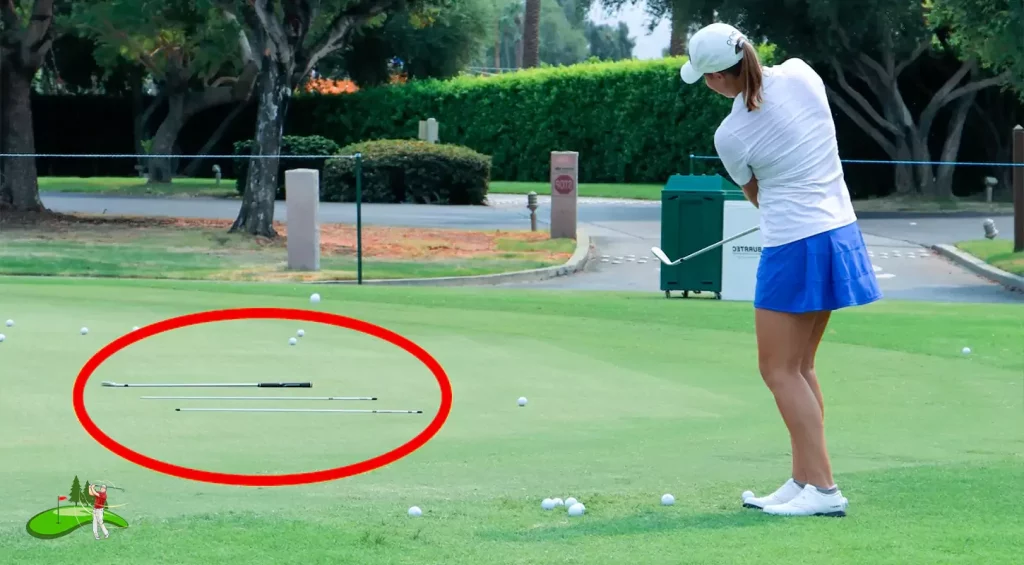
Practice chipping in your warm-up
Whenever you are practicing on the driving range, it is a great idea to hit a few pitches and chips. Even if these are just warm-up shots, they will help boost your confidence when you play on a real golf course.
This way you can have more fun with your shots while adding a new skill to your game.
Chipping in golf techniques
Bump and run
This is one of the most reliable and easy-to-play techniques which is suitable for a lot of situations during the game.
In this technique, golfers use a lower-lofted club, usually a 7-iron, and position the ball slightly back of their stance to keep it low. This technique also requires stable elbows and wrists and movement coming from the shoulders. Adding to this, it is important to keep your backswing as short as possible. This helps the clubface contact the ball on a bit downward angle keeping the leading edge down.
Once you have learned this, you can practice with various lengths of backswings hitting the ball at shorter or longer distances. So, if you ever find yourself in a situation, where you have a clear path between you, the green and the hole, “the bump and run” technique can come in handy.
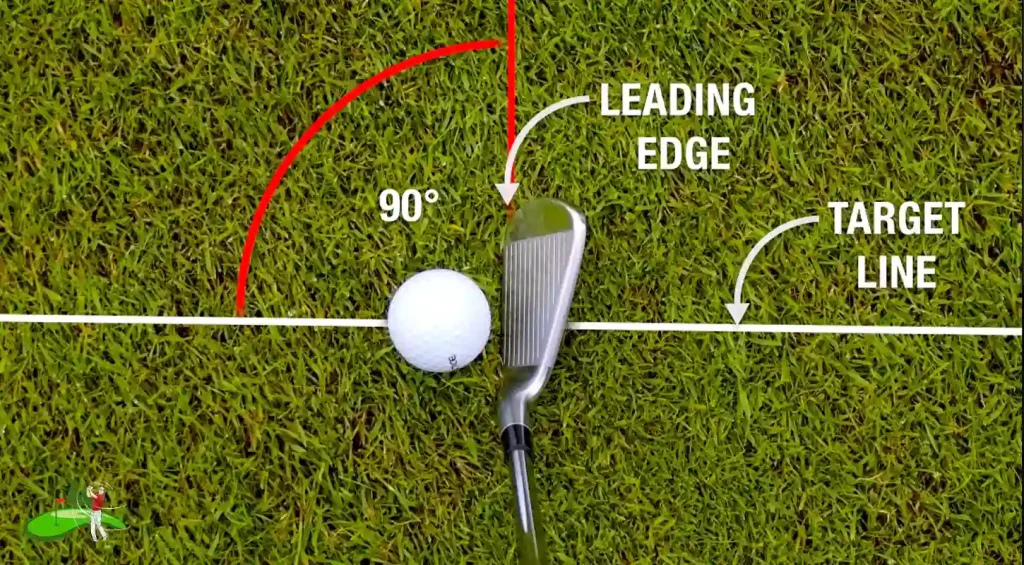
Lower-flighted chip
Due to the introduction of a greater loft, the lower-flighted chip has a little bit more risk associated. In this technique, it becomes a little tricky to stop the ball with such little loft.
So, by using a lower-lofted wedge such as a 50- or 52-degree wedge, and playing on the inside of the back foot, you can get a low trajectory and a little rollout. However, if you perform the shot correctly, the ball will land closer to the hole.
This downward strike will connect with the ball first and then the ground, utilizing the grooves on the clubface. This imparts a spin and stops the ball dead after a few skips.
While using this technique, you just need to make sure that your body weight stays on the front foot. Moreover, your hands are forward preventing the leading edge from lifting the ball too much.
Higher-flighted chip
If you are good at your game and enjoy playing with a lot of obstacles around the greens, like bunkers, then you should definitely use this technique. To get a cleaner shot across those hazards, you need to go more aerial, and for that, you need to use more loft.
For this technique, a 60 to a 64-degree wedge is a great option. These types of lofts are designed to hit the ball higher in the air and landing on the desired spot. You can also make use of your wrists here a bit more. However, keep in mind that it may make it difficult to keep the leading edge of the club down at the right time.
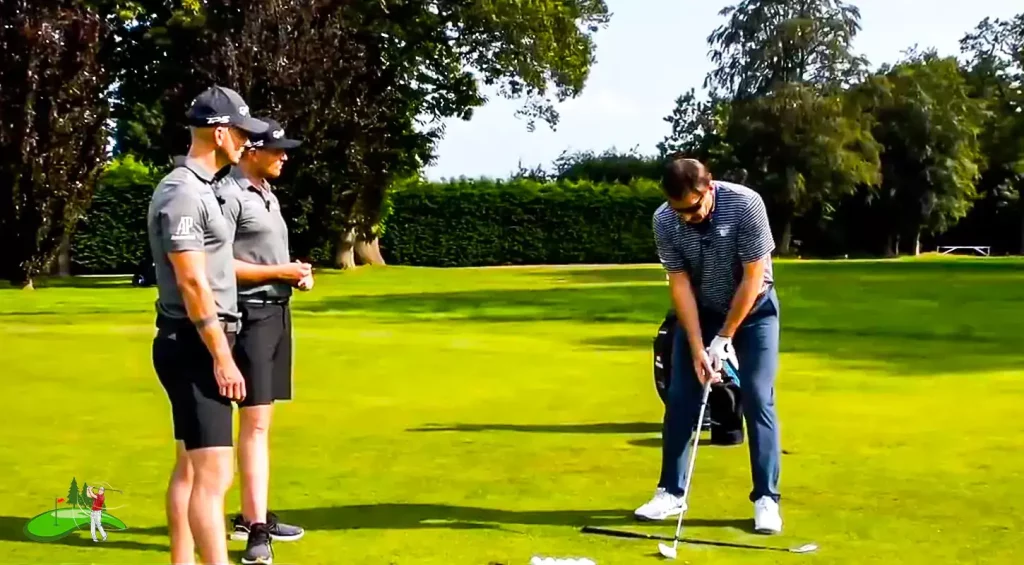
Flop shot
The flop shot can be the riskiest chipping technique and it can lead to bladed shots without real commitment and confidence.
To use this technique, you need a higher degree loft. The clubface should be opened flat which will help the ball fly high in the air. Now, as you accelerate the ball in the air, you should break your wrists. However, keep in mind not to release the wrists too early as it can cause the leading edge to be presented. So, the hand should stay in front of the club and only break the contact at the last moment.
This can be a great technique to master as it will fly across the hazards without much effort and stop dead near the hole.
Common mistakes to avoid while chipping in golf
We have already discussed a number of techniques and tips to keep your arms and hands stable while making a controlled stroke. But now let’s take a look at some of the most common mistakes you need to avoid as you learn to chip your ball.
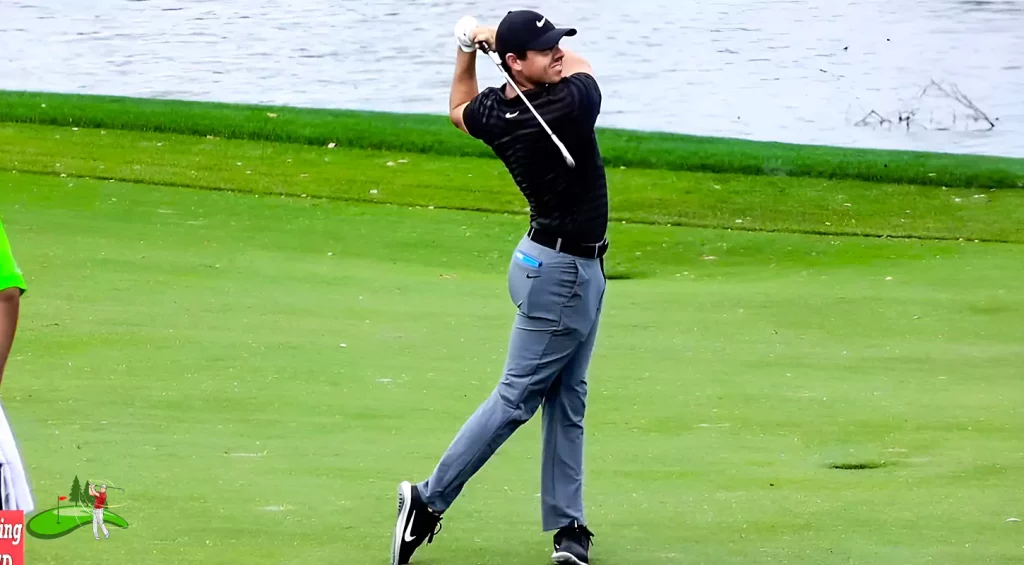
- Trying to help the ball up
In chipping shots, it is important that your ball covers 1/3rd of the distance in the air. However, you should never try to help the ball go up by changing your stance. Always keep your shoulders level, and your spine straight, and do not tilt back. Just trust the loft of your club to do the work and you will always hit a good shot.
- The ball position is too far forward
Always make sure that your ball is not positioned too far forward. And keep your club shaft and left arm aligned with each other. Otherwise, if your ball is positioned too far forward it will make it very difficult for you to hit some solid chip shots.
- Don’t hit, swing
Never think that just hitting the ball is enough to make a proper chip shot. Instead, swing the club back using your chest and shoulders and then slightly turn inside. In addition, a chip shot also requires a little bit of wrist action. So, keep a slight hinge as you swing through the impact.
- Failing to rotate
Usually, amateur golfers make the common mistake of failing to rotate their lower body along with their upper body when hitting the ball. This results in a poor shot with little distance control.

Pitching Vs Chipping in golf
A pitch shot stays in the air for a longer time than it rolls on the green and stops more quickly. Meanwhile, a chip shot stays in the air less than its time rolling on the green and does not stop abruptly.

